Dion - Platamonas Tour
Estimated Duration
10 Hours
Estimated Distance
320 Km
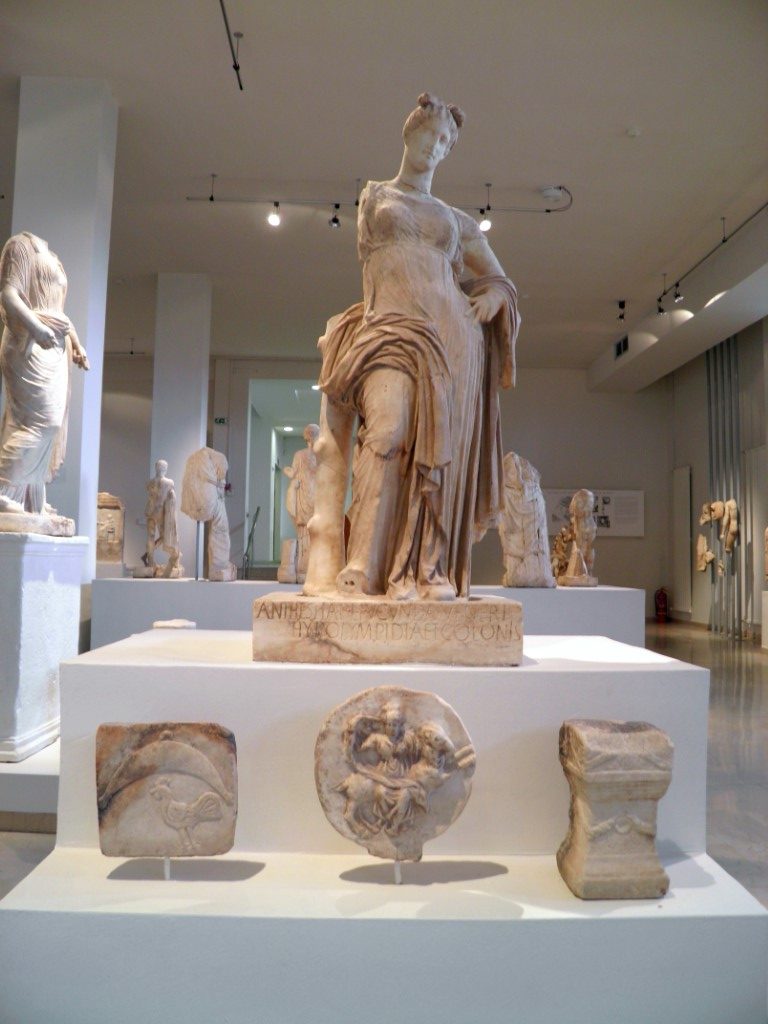
Archaeological Museum of Dion
The Archaeological Museum of Dion is a 10-minute walk west of the archaeological park, along the main road to the village. The museum was established in 1983 to display finds unearthed from the ancient city and other archaeological sites in the regional unit of Pieria.
The first excavations in the archaeological site carried out by the Aristotle University of Thessaloniki from 1928 to 1931 and resumed 30 years later. The works are still continuing under the direction of the University.
The museum is packed with votive sculptures from Hellenistic and Roman times, including statues and marble offerings as well as many other objects including pottery, tombstones, bronze figurines, votive and grave monuments, coins and various other small items, which were found in the wider area of Dion. The basement of the museum is devoted to objects excavated which relate to the daily life of the people of ancient Dion.
However, the most important exhibit, given its own room on the upper floor, is the hydraulis or hydraulic organ, which is the first organ of its kind found in Greece and the oldest found to date anywhere in the world. The organ was found in the summer of 1992 within the remains of a building, which is situated opposite the villa of Dionysos and dates from the 2nd century AD. On a stone slab there are also the remains of an alliance agreement between the Macedonian king Philip V and the citizens of Lysimacheia in Thrace.
The museum offers guided tours for young school children and has a room devoted to educational activities where the visitors can watch a multilingual video about the history of the excavations at Dion.

Hellenistic Theater of ancient Dion
The theatre is located on the archaeological site of ancient Dion, in Pieria Prefecture.
It is a theatral structure with a typical Hellenistic layout, consisting of an orchestra of beaten earth (conistra), a stone drainage duct running around the orchestra, a cavea constructed with a fill of debris, and a stone stage building, which is preserved in very poor condition.
The “Olympia at Dion” were, for ancient Dion, the sacred city of the Macedonians, an event which, apart from references by ancient authors (Diodorus XVII,16, 3-4), is also attested by an inscription on display in the Dion Archaeological Museum, which refers to the holding of athletic and theatrical games. Archelaus added lustre to this festival, which lasted nine days in honour of the Nine Pierian Muses. He invited Euripides, who spent his final years in Macedonia, where he wrote the drama Archelaus and the Bacchae. These two plays were almost certainly performed at the theatre of Dion, in the sacred city of the Macedonians.
To this theatre of the time of Archelaus and Euripides belongs a row of seats, formed of an upright half-brick, as a front, and a whole brick, as a footing. This row is laid out on a different centre, and the orchestra to which is belonged must have been set a little higher than the modern one. The stage building of this theatre would have been wooden, like those of other contemporary Greek theatres. Part of a poros stone proedria dates from the same phase.
The theatre in its surviving form is the result of renovation or rather rebuilding from the foundations on the same site, which took place in the second half of the 3rd century BC, when most Greek theatres acquired a stone stage building. More specifically, the reconstruction must be linked to the destruction of Dion by the Aetolians in 220 BC, in the reign of Philip V, who immediately aided in rebuilding the sanctuaries and the city, endowing it with generous adornments. This dating is confirmed by the form of the architectural members of the marble proscenium, and by the large number of coins of Philip V found inside the theatre.
A late phase, after the abandonment of the theatre and its stripping of useful material in Roman times, is hard to date due to its rough construction and poor state of preservation.
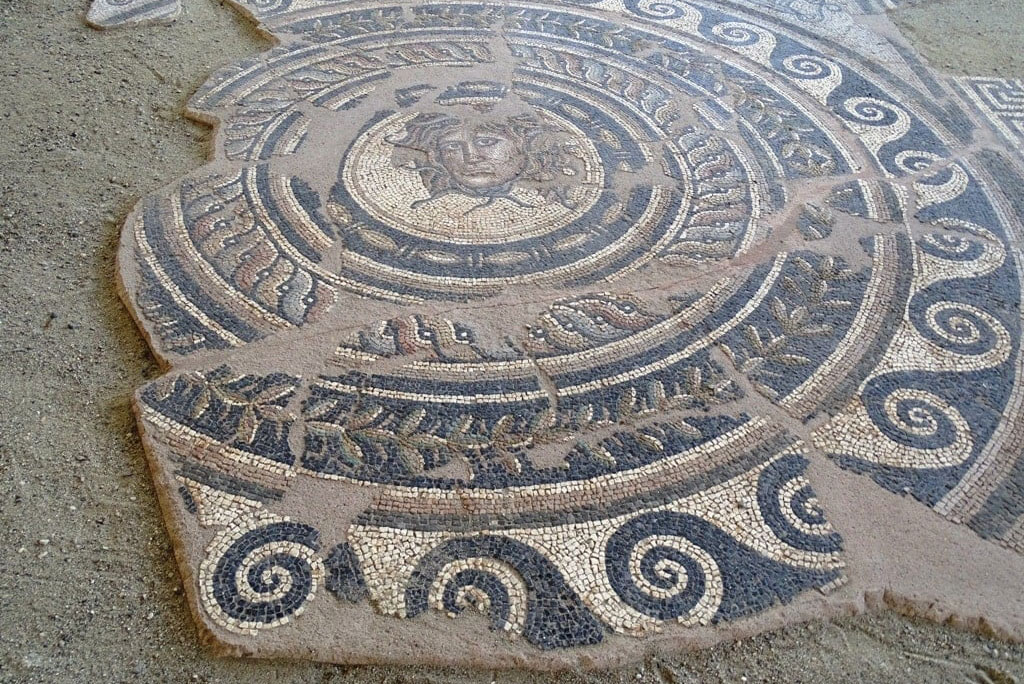
The Archaeological Park of Dion
The Archaeological Park of Dion blends the mythical wonders of ancient Greek civilization with the enchanting flora of Olympus. A visit to the ancient “City of Zeus,” allows the visitor to witness how ancient Greeks lived, prospered and worshipped their gods. Indeed, Dion was once the sacred site of the Kingdom of Macedonia. This ancient city was inhabited during the Hellenistic and Roman periods. Many Greek gods were worshiped in Dion, with the most notable one being Zeus, the king of all ancient Greek gods. Many other sanctuaries can be found on this sacred land, including those of Demeter and Isis. In addition to sanctuaries, this archaeological site of Mount Olympus features Macedonian tombs, theaters, stadiums, ancient statues, an ancient city and many more artifacts that have been discovered by archaeologists throughout the years.
This open-air museum is located at the foothill of Mount Olympus and approximately 15 km from Katerini. The archaeological park spans across 150 hectares, 50 of which belong to the surrounding urban area, 50 to the sanctuaries and the other 50 have yet to be explored. In addition to the archaeological park, the site of Dion also consists of a museum that houses artifacts of great importance that have been unearthed over the years.
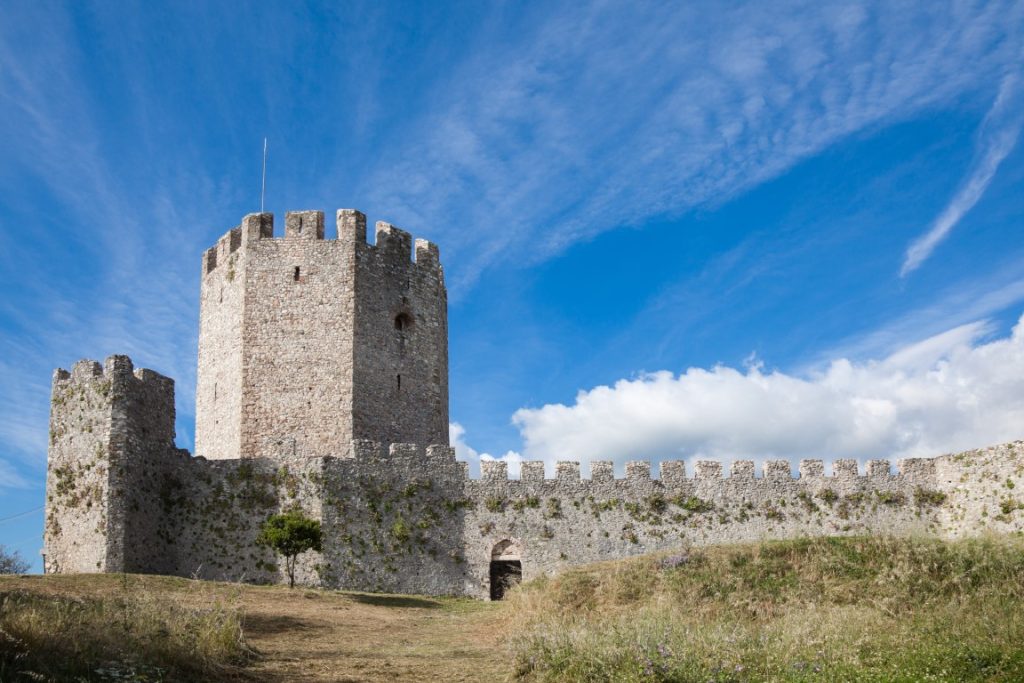
Platamon Castle
The castle is at the location of the ancient city of Heraclia. The name “Platamon” appears for the first time in an imperial order of 1198 but, most probably, there was already a Byzantine castle there, since the 10th century.
After the fall of Constantinople during the 4th Crusade in 1204, Platamon came under the jurisdiction of Boniface of Montferrat, king of Thessaloniki who gave it to the Lombard knight Rolando Piska. He is the one who rebuilt the castle on top of the old ruined construction.
The castle soon became Byzantine again. In 1218, it was captured by the despot of Epirus Theodoros Aggelos and after the Battle of Pelagonia (1259), by Michail Paleologos of Nikea who later became the Byzantine emperor.
The Turks captured the castle in 1385 and paid much attention to its maintenance because they needed the castle to control the strategically important area. After a short break between 1425 and 1427, when the Venetians managed to conquer the castle, the Turks returned and stayed until the beginning of the 20th century.
During World War II, in April 1941, a unit of New Zealanders tried to defend Platamon but forced to leave after the bombardment of the castle by the Germans

Vale of Tempe
According to the legend, the valley opened by Poseidon’s trident. Another myth narrates the love of the god Apollo for Daphne, the daughter of Pineios.
It is the place where Apollo chose to cleanse himself for the murder of Python when he took over the Oracle at Delphoi. Here he fell in love with Daphne, the Nymph that became his sacred plant. The old pilgrims headed towards Delphoi carrying laurel leaves from the valley of Tempi to the Oracle to honour the god Apollo. The Sacred Laurels were cut from the “Holy Narrows” for crowning the athletes who participated during the opening and the games Pythia.
Tempi or Vale of Tempi is formed between the Mount Olympus and Kissavos (Ossa), in the centre of Greece. The valley is 10 kilometres in length, while on its narrowest point a gorge is formed 25 metres in width and depth about 500 metres. River Pineios runs through it, which then flows to the Aegean. Tempi constitute the main passage from Macedonia to Thessaly and for this reason the area was of great importance since antiquity.
Today, the railway passes through the area along with the national road Athens-Thessaloniki. On 2017 2 tunnels that by-pass the valley were inaugurated, one of which is the longest road tunnel in Greece and the Balkans.
The name of Tempi remains the same since antiquity. During the Turkish occupation, Tempi was also called Baba. The iron hanging footbridge that crosses the Pineiosriver constitutes a reference point and is necessary in order to visit the monastery of Agia Paraskevi built in the rock of Olympus and to admire the virgin landscape! Next to the church, there is a small cave where the initial pilgrimage is found, where the holy water of Agia Paraskevi flows at its end. The cave is so small that only one person can go in at a time.
At the verdant valley of Tempi, there are numerous natural springs flowing to Pineios. Close to the exit of Tempi, there are springs known since antiquity as “Daphne’s Spring” and “Aphrodite’s Spring”.
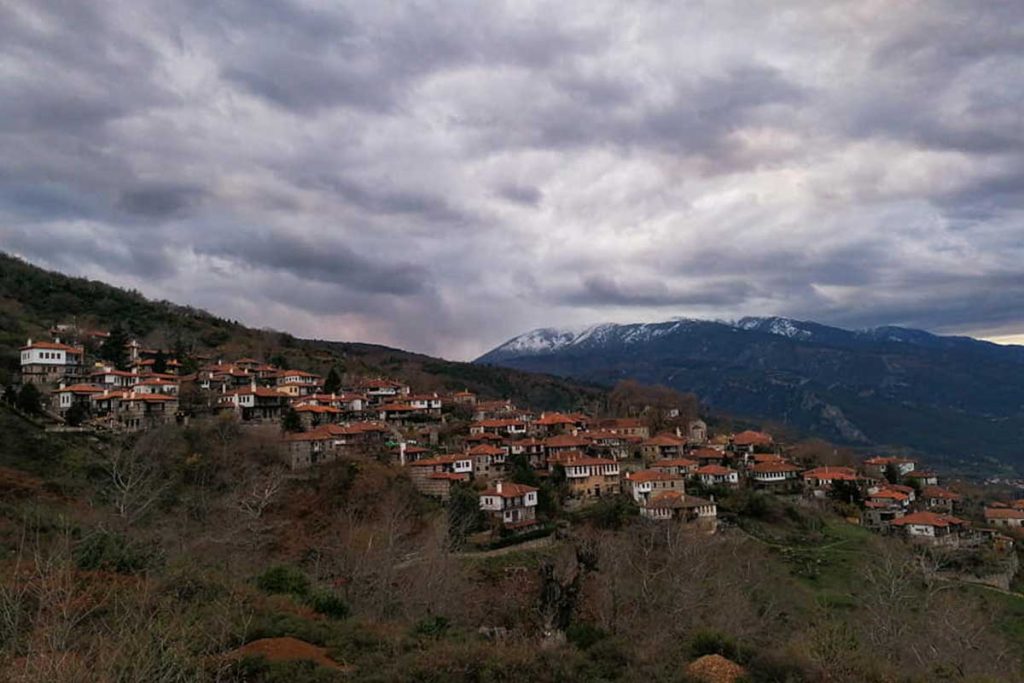
Palaios Panteleimonas
Palaios Panteleimonas (Greek: Παλαιός Παντελεήμονας) is a mountain village of the former municipality of East Olympos, which is part of the municipality of Dio-Olympos, in the Pieria regional unit, Central Macedonia, Greece.
Palaios Panteleimonas is located 43 km from Katerini and it is just 6 km from the village and beach of Neos Panteleimonas, where there are also many possibilities for accommodation, dining, entertainment and tourist information. The view of the Thermaikos Gulf from the area, is unique.
The path to the village and the surrounding area is rich of fauna of the lower Mount Olympus, with forest of chestnut, oak and arbutus. You can also watch the summer of cultural events of the International Olympus Festival of Castle of Platamon.
The access is made via the National Highway and the railway station of Neoi Poroi.
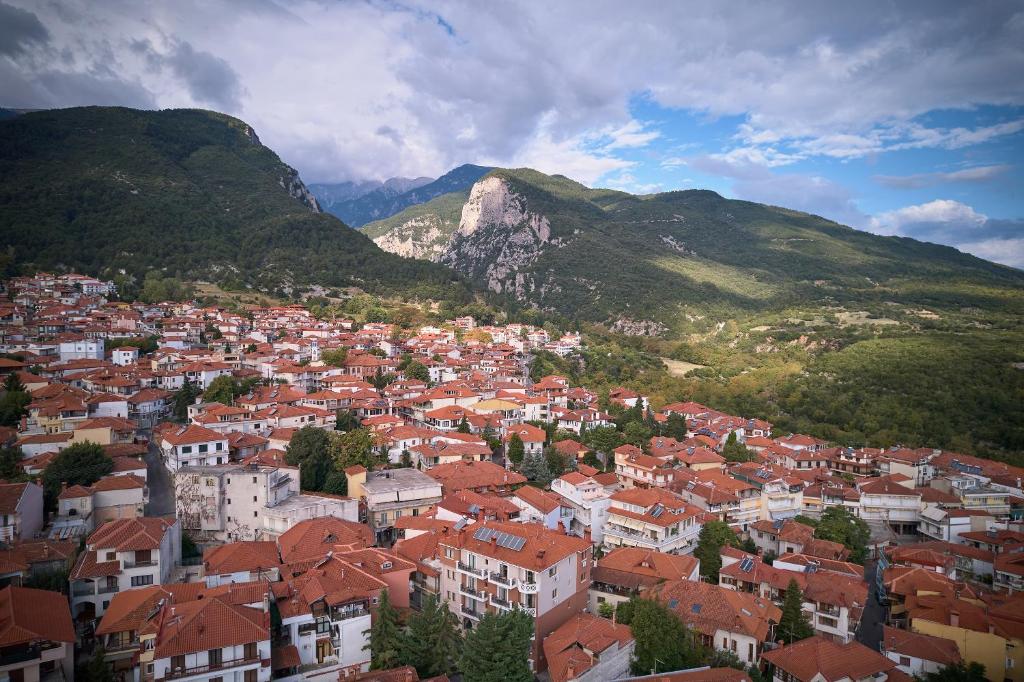
Litochoro
It stretches up the mountainside of Olympus’ highest peak (Mytikas, 2,918 m.), yet Litochoro is only a few kilometres away from the sea and that makes it the perfect tourist destination any time of the year! This picturesque town was built following the traditional architecture of Macedonia and the variations of lush vegetation surrounding it enhance the area’s aesthetic harmony. It is a well-structured tourist resort with quality hotel facilities and services and the favourite point of departure for mountaineering trips up the abode of the Olympian gods. The settlement dates back to the 14th century. Following descriptions by foreign and Greek travellers at that time, the majority of residents were mariners and there were also a good many textile workshops in town.

